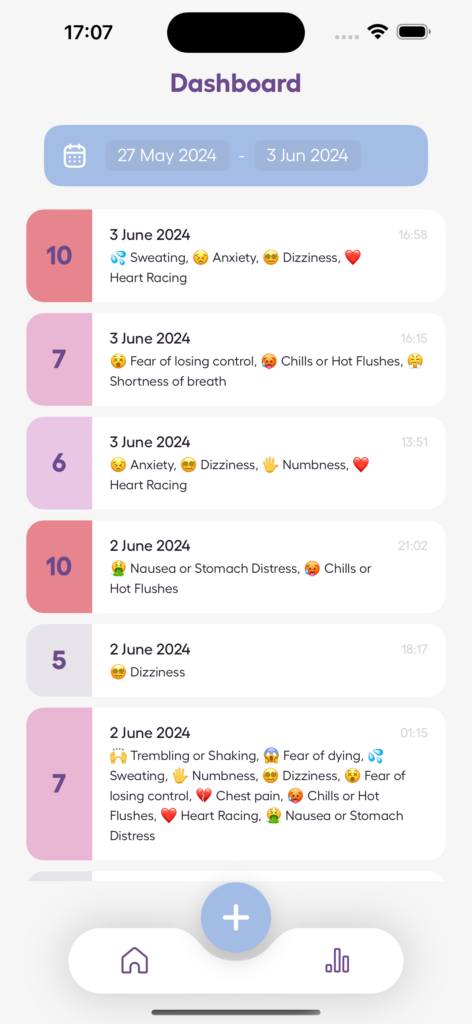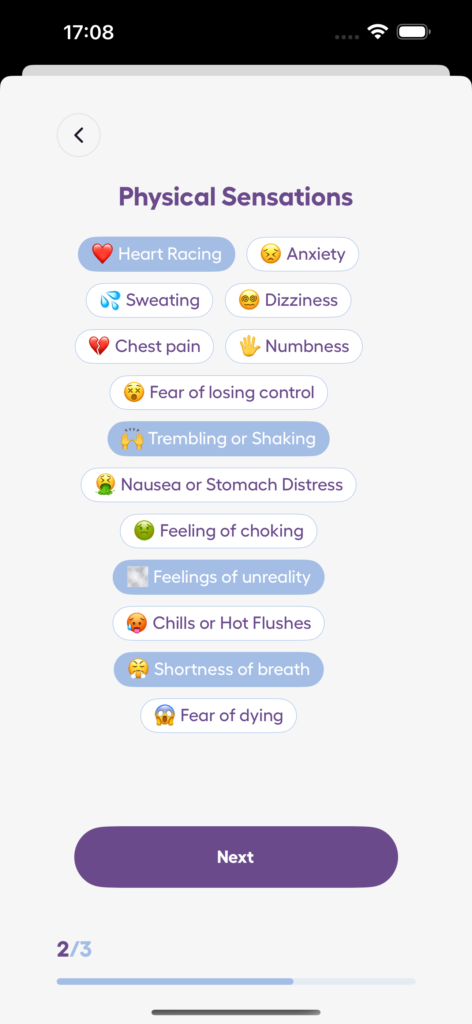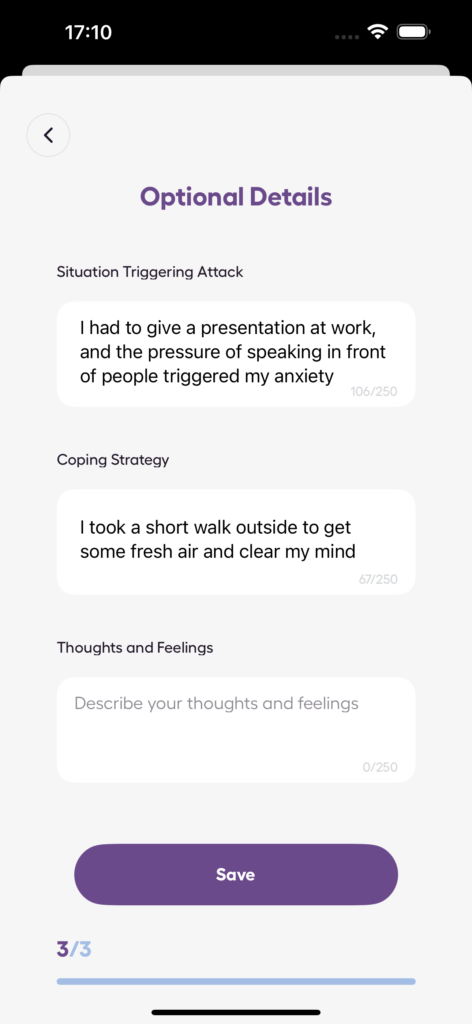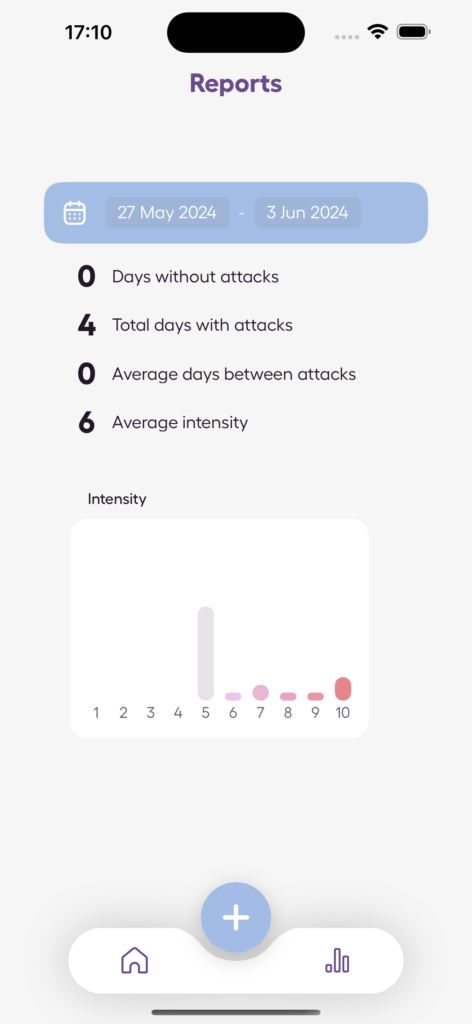Narrative therapy helps people manage grief and anxiety by separating these emotions from their identity. This method encourages individuals to view their challenges as external issues, making them easier to address. Key benefits include:
- For Grief: Reframes loss as part of a life story, preserves positive memories, and highlights personal strengths.
- For Anxiety: Externalizes anxious thoughts, reduces overwhelm, and reshapes personal narratives for a sense of control.
Practical tools like journaling, storytelling, and apps like the Anxiety Journal complement therapy by tracking emotions and offering structured insights. These techniques empower individuals to process grief and anxiety while fostering resilience.
Related video from YouTube
How Narrative Therapy Processes Grief
Narrative therapy helps people navigate grief by guiding them to reshape their relationship with loss. It offers tools to handle intense emotions while preserving meaningful connections to those they’ve lost.
Externalizing Grief
This technique involves seeing grief as something separate from oneself. By doing so, individuals can better observe and address their feelings. For instance, saying, "The grief is making me feel isolated" instead of "I am isolated" shifts the perspective. This small change encourages self-compassion and a clearer understanding of emotions.
Re-authoring the Grief Story
Rewriting the story of loss allows individuals to find meaning while still honoring their loved one. Rather than focusing only on the pain, this process integrates cherished memories into the narrative.
Therapists might ask questions like:
- What values or lessons from your loved one influence you today?
- How does their memory inspire your actions or goals?
- What positive aspects of their life can you carry forward?
These reflections help create a more balanced and meaningful story.
Identifying Personal Strengths
Narrative therapy also highlights personal resilience, uncovering strengths and coping skills that aid in healing. By recognizing these abilities, individuals often feel more equipped to manage grief and related challenges, such as anxiety.
As people reframe their grief and acknowledge their inner strengths, they often experience a sense of growth. This process respects the individuality of each person’s journey while offering practical ways to move forward. It empowers individuals to address not just their grief but also the broader emotional challenges that come with it.
Using Narrative Therapy to Manage Anxiety
Narrative therapy isn’t just for processing grief – it also offers practical ways to handle anxiety by changing how we understand and react to it.
Seeing Anxiety as Separate from Yourself
Narrative therapy uses the idea of externalization to treat anxiety as something outside of yourself. This approach helps reduce self-blame and brings clarity. For example, instead of saying, "I am an anxious person", you might say, "Anxiety is trying to influence me." This shift creates emotional distance, making it easier to address anxiety without feeling overwhelmed. When grief and anxiety overlap, externalizing both can simplify the healing process.
Taking Charge Through Storytelling
One of the key tools in narrative therapy is storytelling. By identifying the stories you tell yourself about anxiety, questioning their truth, and replacing them with narratives that highlight strength and resilience, you can reshape your perspective. This process often leads to discovering helpful techniques, such as relaxation methods or reframing negative thoughts.
Leveraging the Anxiety Journal App

Technology can play a big role in supporting narrative therapy. The Anxiety Journal app is a great example. It allows users to log anxiety episodes, monitor stress levels, and reflect through journaling in a private and secure environment. This not only aids self-awareness but also provides valuable insights for therapy sessions.
"Narrative therapy helps people externalize their problems by separating their identity from the issues they are dealing with".
sbb-itb-b1dedcc
Practical Techniques in Narrative Therapy
Mapping the Impact of Problems
Problem mapping is a way to understand how issues like grief or anxiety influence different parts of your life. Start by drawing circles to represent key areas such as work, relationships, and self-care. Then, use lines to show how these problems connect to and affect each area. This visual exercise can help uncover patterns and guide you in deciding where to focus your energy. It’s all about seeing the problem as something outside of yourself, which is a core idea in narrative therapy.
Research supports this approach, showing it can lead to a significant reduction in PTSD symptoms – about 54% improvement right after treatment and 62% during follow-up. After mapping, journaling can add another layer of clarity, helping you better understand your emotions and reshape your personal story.
Writing and Journaling
Journaling can be a powerful tool when paired with structured prompts. Here are some examples to guide your writing:
| Purpose | Writing Prompt | Focus Area |
|---|---|---|
| Grief Processing | Write about a cherished memory | Memory Preservation |
| Anxiety Management | Recall a time you overcame anxiety | Building Confidence |
| Narrative Reframing | Reflect on strengths developed during hardship | Personal Growth |
If you prefer a digital option, the Anxiety Journal app offers a private space to track your thoughts and progress. For those who struggle with words, non-verbal methods like art or visualization can be just as effective.
Using Art and Visualization
Art and visualization provide another way to work through emotions, especially for those who find it hard to express themselves with words. These methods encourage creative thinking to process feelings and experiences.
"Narrative therapy organizes and restructures the death experience, allowing the grieving individual to remember the loss in a healthy and meaningful way."
One idea is to create a timeline of your journey, using colors or symbols to represent key emotions and events. This can help you process grief while reimagining your sense of self. Another exercise is to draw your anxiety as a character or shape. Then, transform it step by step into something that reflects how you’d like to interact with it.
Conclusion and Key Points
How Narrative Therapy Helps
Narrative therapy helps individuals address grief and anxiety by reshaping personal stories and encouraging self-kindness. Studies show it can lead to a 54% drop in PTSD symptoms after treatment, increasing to 62% during follow-ups. By reframing challenges as solvable issues rather than personal shortcomings, people build resilience and experience less shame.
While this approach lays a strong groundwork for emotional recovery, blending it with modern tools can make it even more effective.
Using Tools to Support Therapy
Digital tools like the Anxiety Journal app bring extra value to narrative therapy. These tools offer structured ways to record experiences, spot patterns, and gain insights. Unlike traditional journaling, they provide real-time tracking, automated analysis, and data-driven feedback. This mix not only supports consistency but also offers meaningful insights to guide therapeutic progress.
FAQs
How does narrative therapy help with grief?
Narrative therapy helps individuals process grief by encouraging them to see themselves as active participants in their own stories rather than passive victims of their circumstances. Studies indicate it can lead to reduced PTSD symptoms and better emotional health. This approach allows individuals to separate grief from their sense of self, creating room for healing and new perspectives while finding meaningful insights along the way.
By focusing on these ideas, narrative therapy provides practical tools for navigating the challenges of grief.
How to use narrative therapy for grief?
Here are a few ways to incorporate narrative therapy techniques into your grief process:
- Journaling: Write about moments when you felt strong or resilient.
- Memory Box: Gather items that symbolize your journey through grief.
- Art: Use creative outlets to express your emotions.
For added support, consider using tools like the Anxiety Journal app. Its journaling and tracking features can help you identify emotional patterns and document your progress in reshaping your grief story.









